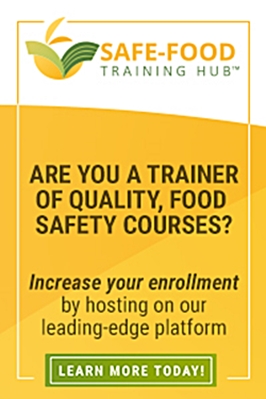Food Safety Lessons from Europe: This Could Happen in the U.S.
By David Acheson, Leavitt Partners
The on-going devastation in Europe linked to E. coli O104 serves as a strong reminder to those of us in the United States that we are always one step away from a major food safety crisis. The most recent numbers would indicate over 1,500 individuals have been diagnosed with infection and over 470 have developed hemolytic uremic syndrome (HUS) and 18 have died. HUS is one of the most devastating complications of foodborne illness that I know of. HUS is a combination of kidney failure, anemia and loss of ability to form blood clots due to low platelets and results in a dire situation with, as we have seen so far in this on-going outbreak, a significant mortality rate. In the almost 25 years that I have been dealing with Shiga toxin producing E. coli like the O104 strain and the infamous O157:H7 strain, I have never seen HUS rates even close to this outbreak.
As we look on from the outside at the outbreak in the European Union (EU), it is natural to wonder if this could happen in the United States. I have very little doubt that it could, and so we should not lose this opportunity to learn more lessons about food safety. Unfortunately, we can never offer a 100% guarantee of prevention even with the most stringent regulatory requirements. That said, the most important lesson is to focus on building systems that prevent such a situation occurring here in the U.S. Yes, it would be appropriate for Federal regulators to recognize that many serotypes of E. coli other than O157:H7 are capable of causing disease – but I doubt that declaring another half dozen E. coli as adulterants would have any impact on the likelihood of an O104 outbreak in the U.S. The solution does not lie in narrowly focused approaches, but rather should be aimed at broad mitigation strategies that are focused on reducing the risks in general for all pathogenic E. coli and not just a few serotypes. This concept needs to be applied in all areas where devastating pathogens like this E. coli O104 can enter our food supply. Such entry points are likely to be on farms where the pathogens may get on to fresh produce (as appears to have happened in the EU), or be a constituent of the intestinal flora of animals that are destined to become part of our food supply. However, no amount of on farm control or HACCP systems will offer a guarantee, and one has to look for a multifaceted approach that includes controls throughout the supply chain from farms, during processing (of meat, fresh produce or other higher risk items like raw milk) and during handling of food at home.
The second striking feature of the current EU outbreak is the apparent inability to determine the vehicle. Cucumbers from Spain have been implicated and then exonerated; lettuce is suspect as are tomatoes. Currently advice to consumers is very broad and I can readily imagine the uproar in the US if FDA made the recommendation not to eat lettuce, tomatoes or cucumber. An important lesson on the response side of the equation for those of us in the US is to be sure that our local and state public health infrastructure retains the capacity and funding to be able to investigate foodborne outbreaks quickly and efficiently, thus allowing contaminated food to be identified rapidly and consumer messages to be targeted.
In the current climate of reduced federal funding, it should be made very clear to Congress that our food safety system in the US cannot afford to be undermined through lack of resources. A request to Congress is not to cut funding, but rather to ensure efficient use of current and future much needed funding.
A final thought on prevention – successful prevention is dependent on having a series of controls that individually reduce risk and together hopefully reduce risk to the point where there is none. However, the reality is that current preventive controls often fall short of total risk reduction. Perhaps it’s time to ask ourselves why interventions, such as high pressure treatment or irradiation are not being evaluated and used more? Clearly consumers need to have a choice, and products have to be labeled appropriately, but as US consumers look at over 470 people in the EU with a life-threatening foodborne illness that is unquestionably a life-altering event they may wish to have the option of irradiated or high pressure treated food more readily available in the local supermarket than it is today. Offering such options in grocery stores would provide the consumer with the ability to make choices and have a role in determining the safety of the food they serve their family.
Dr. David William Kennedy Acheson is the Managing Director, Food and Import Safety Practice, at Levitt Partners founded by former U.S. Health and Human Services Secretary and EPA Administrator Michael O. Leavitt, the partnership advises clients in the health care and food safety sectors. As Managing Director of the Food and Import Safety Practice, Acheson helps clients enter new markets, enhance the value of their products, navigate dynamic regulatory and reimbursement systems and improve health conditions around the globe.

Categories: Food Safety
Tags:



